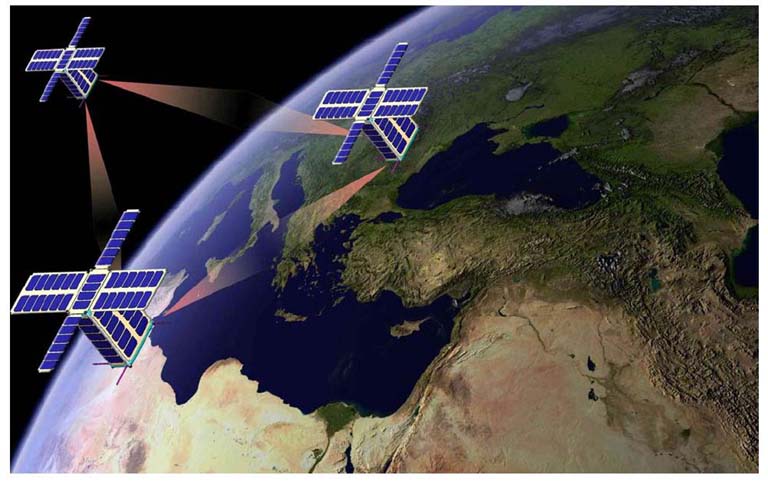Caesar Project
- A. Hadad, Y. Palti, N. Shemer, E. Suzan, D. Vahadat , N. Mashiach, G. Alon, G. Vaisman, D. Abdrakhmanov, K. Pisarev
- Jacob Herscovitz

Introduction: The CAESAR project began in 2010 as a senior student satellite project. The first team of students designed a 48 satellites constellation with the goal of locating individuals in distress in oceanic surroundings around the world. Following the success of CAESAR 2010-2011, the Technion decided to launch a three satellite demonstration mission lead by the Distributed Space System Lab (DSSL) and supported by IAI, RAFAEL and other partners. The mission is planned to launch in 2015 with the CAESAR team as an ongoing contributor to the various tasks of the mission.
Main Mission Requirements:
1. Location of a distress signal to an accuracy of 100 m.
2. Formation flying based on a three satellite formation on LEO orbit.
3. Mission operational lifetime to be no less than 12 months.
The CAESAR team participated in the following aspects of the design:
Geolocation, Formation Control, Structure, Thermal Control, Attitude Determination and Control (ADCS), Orbit Estimation, On-Board Data Handling, Electrical System, System Engineering, Propulsion System and a Satellite Simulator.
A brief description of the main tasks:
Geolocation: Using a 3 satellites formation, the location of an object can be determined using TDOA (Time Difference Of Arrival) and FDOA (Frequency Deference Of Arrival). The method was validated at the DSSL.
Formation Control: The main purpose of the formation control is to keep the satellites in formation throughout the mission. The formation control is based on equalizing the satellite mean semi major axis so they do not drift from one another.
Attitude Determination and Control (ADCS): An ADCS system was designed to meet requirements for a 3-axis stabilized satellite capable of accurately pointing the payload to earth or the solar panels to the sun. A combination of reaction wheels and magnetorquers were chosen as the actuators. Magnetometer and sun-sensor reading were computed using an Extended Kalman Filter (EKF) designed to estimate attitude and rate of the satellite throughout the mission.
Orbit Estimation: An orbit estimation algorithm was developed using an EKF which receives GNSS receiver data and estimates the satellite position and velocity to an accuracy better than in position and in velocity.
Propulsion System: Two options for the propulsion system were designed and are currently considered:
The first alternative is a high pressure system: uses compressed Nitrogen (Gas), when the pressure inside the gas tank is 376 bars. The obtained thrust is constant and continuous. The second alternative is a low pressure system: uses Butane, when part is liquid and part is gas providing circulating thrust which lasts 5 seconds.
Satellite Simulator: In order to test the ADCS a 3-DOF simulator was designed. The estimated cost is $150,000 and an extra 4000 man hours. The main components are: Helm-Holtz coil system for magnetic field simulation, air bearing to simulate to a zero friction environment, actuators with weights for auto balancing and sun simulator lamp.








